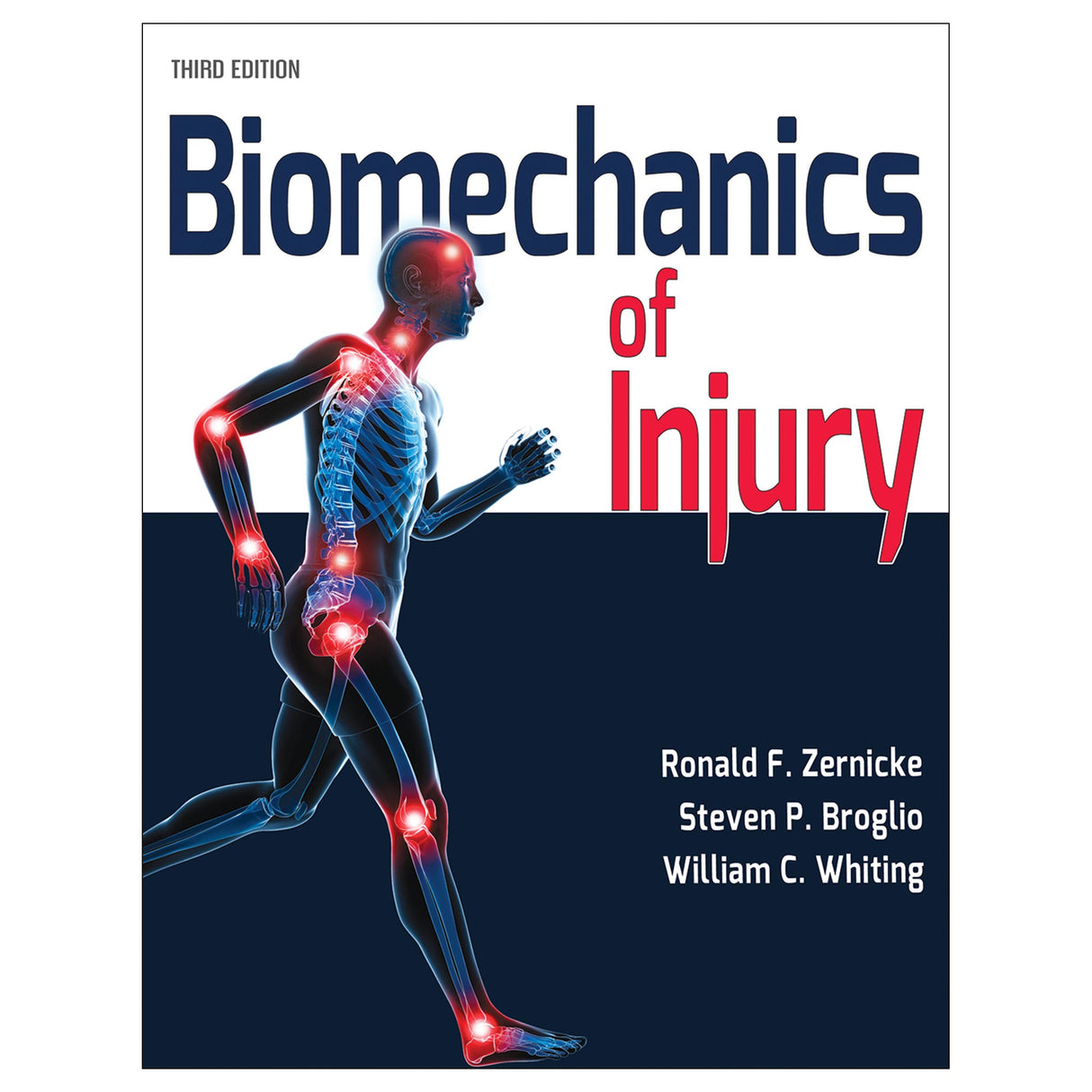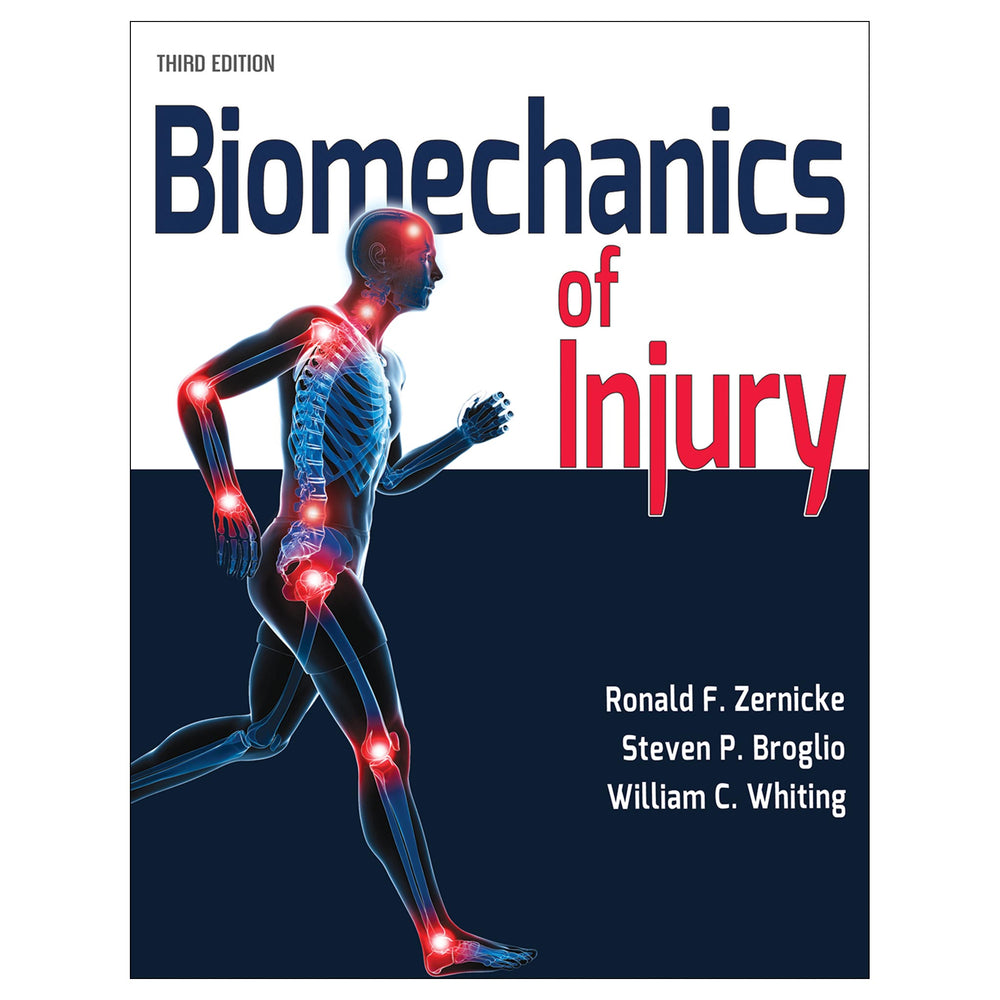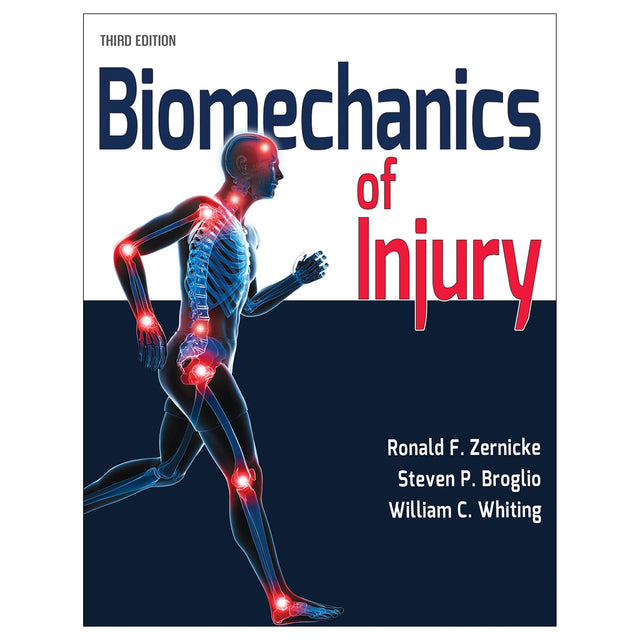Biomechanics of Injury-3rd Edition
$180.95 CAD
Previously titled Biomechanics of Musculoskeletal Injury, this third edition expands coverage of injuries beyond those of the musculoskeletal system to include the head, neck, and spine. Joining noted biomechanists Ronald Zernicke and William Whiting is concussion expert and athletic trainer Steven Broglio, who offers insights on head trauma and other neurological injuries. Unique in its evaluation of and appreciation for the intricacies of injury mechanisms, Biomechanics of Injury, Third Edition, comprehensively examines these issues:
- The mechanical aspects of injury and the concept of injury as a stimulus for beneficial tissue adaptations
- The effects of injury on the normal function of the human anatomy and joint mechanics
- Mechanical parameters such as force, stress and strain, stiffness, and elasticity and their application to tissue mechanics and injury
- How connective tissues respond to mechanical loading and how those tissues are studied to quantify their mechanical behavior
- Factors such as age, gender, nutrition, and exercise, with an emphasis on how lifestyle choices might lessen the chance or severity of injury
- How the principles of mechanical load and overload, use and overuse, level and progression of injury, and the many contributory factors involved in injury combine to form a backdrop for viewing specific injuries
Biomechanics of Injury, Third Edition, also employs learning aids to help readers understand and retain information. Objectives at the start of each chapter highlight the main concepts. Key terms appear in bold in the text and are defined in the glossary. Key Points at the end of each chapter summarize central concepts. Questions to Consider appear at the end of each chapter to test readers’ understanding and ability to apply the information presented. Updated Suggested Readings are included at the end of each chapter for readers who wish to dive deeper into selected topics.
Knowledge of the biological responses of tissues to mechanical loading improves our understanding of injury and its consequences. Biomechanics of Injury, Third Edition, will enable students and health professionals to reduce the likelihood that clients, patients, or athletes will experience painful and debilitating physical injury.
Audience
Students in exercise science, kinesiology, human movement studies, physical education, biomechanics, physical therapy, athletic training, orthopedics, and sports medicine as well as professionals and researchers in these fields.Chapter 1. Overview and Perspectives on Injury
Definition of Injury
Perspectives on Injury
Chapter 2. Classification, Structure, and Function of Biological Tissues
Embryology
Tissue Types
Arthrology
Chapter 3. Basic Biomechanics
Kinematics
Kinetics
Fluid Mechanics
Joint Mechanics
Material Mechanics
Biomechanical Modeling and Simulation
Part II. Tissue Mechanics and Injury
Chapter 4. Tissue Biomechanics and Adaptation
Biomechanics of Bone
Adaptation of Bone
Biomechanics and Adaptation of Other Connective Tissues
Biomechanics of Skeletal Muscle
Adaptation of Skeletal Muscle
Chapter 5. Concepts of Injury and Healing
Overview of Injury Mechanisms
Principles of Injury
Inflammation and Entrapment Conditions
Bone Injuries
Injuries to Other Connective Tissues
Skeletal Muscle
Joint Injuries
Nonmusculoskeletal Injuries
Part III. Regional Injuries
Chapter 6. Lower-Extremity Injuries
Hip Injuries
Thigh Injuries
Knee Injuries
Lower-Leg Injuries
Ankle and Foot Injuries
Chapter 7. Upper-Extremity Injuries
Shoulder Injuries
Upper-Arm Injuries
Elbow Injuries
Forearm Injuries
Wrist and Hand Injuries
Chapter 8. Head, Neck, and Trunk Injuries
Anatomy
Head Injuries
Neck Injuries
Trunk Injuries
All ancillaries are free to adopting instructors through HKPropel.
Instructor guide. Includes a sample syllabus and a sample course outline for organizing lectures and chapters. It also includes supplemental lecture aids, notes, and guidance as well as suggested answers to the review questions found at the end of each chapter.
Test package. Contains 195 questions in multiple-choice format. The files may be downloaded for integration with a learning management system or printed for use as paper-based tests. Instructors may also create their own customized quizzes or tests from the test bank questions.
Chapter quizzes. Contains ready-made quizzes (9-10 questions each) to assess student comprehension of the most important concepts in each chapter.
Presentation package. Features more than 260 PowerPoint slides of text, artwork, and tables from the book that can be used for class discussion and presentation. The slides in the presentation package can be used directly within PowerPoint or printed to make handouts for students. Instructors can easily add, modify, and rearrange the order of the slides.
Image bank. Includes most of the figures, content photos, and tables from the text, sorted by chapter. These can be used in developing a customized presentation based on specific course requirements.









